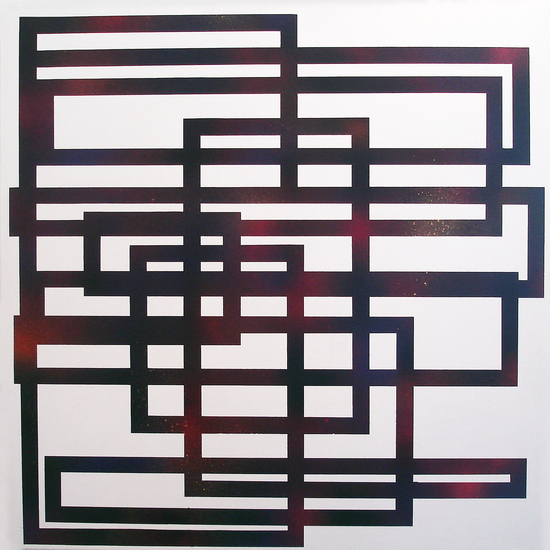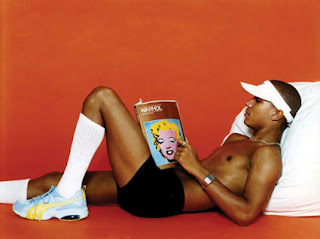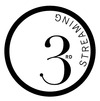 |
| Lonnie Holley, Gabriel's Horn, 2011, mixed media, 67" x 51" x 18" inches. |
Curated by Rich Blint
Featuring the work of David Hammons, Diedra
Harris-Kelley, Lonnie Holley, Jayson Keeling and Jacolby Satterwhite
November 13 – December 13, 2014
Opening Reception: Thursday, November 13, 2014, 6-8 pm
The University of North Carolina at Chapel Hill
115 South
Columbia Street
Chapel
Hill, NC
From press
release:
"Then
of a sudden up from the darkness came music. It was human music, but of a
wildness and a weirdness that startled the boy as it fluttered and danced
across the dull red waters of the swamp. He hesitated, then impelled by some
strange power, left the highway and slipped into the forest of the swamp,
shrinking, yet following the song hungrily and half forgetting his fear. A
harsher, shriller note struck in as of many and ruder voices; but above it flew
the first sweet music, birdlike, abandoned, and the boy crept closer."
--W. E. B.
Du Bois, The Quest for the Silver Fleece (1911)
Under the
press of enduring asymmetrical arrangements in global life, visual
representations of black Atlantic experience in contemporary art have been
preoccupied with scenes of historical slight and modern re-castings of the
brutal encounter of subjects throughout the diaspora with the habits of power
ordering Western society. Through fantastical re-stagings, strategies of
inversion, to expressions of radical self-fashioning and other aesthetic
conceits, black artists of the New World south have embraced the convention of
“imaging back” to empire—a mode of visual address that has largely proven
fertile expressive ground. The First Sweet Music, an exhibition of five
cross-generational artists working in photography, painting, sculpture, and
video, offers flashes of the “black ecstatic” as another way into this fraught
and dense visual terrain, presenting works as a way of orienting the viewer’s
gaze to the beauty, grace, and true drama that propels and sustains the heroic
activity of human living under the vulgarity of protracted subjugation. Echoing
Toni Morrison’s invitation in the opening pages of her novel Sula to the insurance collector
descending on a struggling community of the newly free, the exhibition is a
metaphorical injunction to “stand in the back of The Greater Saint Matthews
Church and let the tenor’s voice dress [you] in silk” in order to see and get
“closer” to the higher (or lower) “birdlike” frequencies resonant with the forces
that are much of the substance of black survival.
Lonnie Holley’s Gabriel’s Horn (2011) is
such a heralding. Thoughtfully mixed in media, this sculpture of found and
seemingly disparate objects utilizes the biblical and almost didactic clarity
of the horn that crowns it to underscore the need to disturb the slumber in
American life concerning the arrested and dangerous state of our democratic
project. David Hammons’ untitled sculpture of Venetian blinds (circa 1986)
answers this call across time, space, and form in his dramatically elegant and
emotionally incisive re-purposing of this everyday material signifying sight
and blindness in a time of desperate urban neglect punctuated by crime, drug
abuse, and the overall dispiriting loss of human life and energy. Diedra
Harris-Kelley’s remarkably successful paintings are studies in abstract and
figurative rapture. Depicting the artist laboring with the imaginative in her
studio (haunted and aided by “demons” and ancestors), and an open-mouthed,
wide-eyed figure with horns for hair, these works startle with a mature
interiority. Through his photographs, Jayson Keeling pairs well with
Harris-Kelley. Thoughts and Visions of a
Severed Head (Whisper)(2012), an archival inkjet pigment print of a cast of
the artist’s head produced by John Ahearn, is a contemporary riff on the 1853
short story by the Belgian painter, Antonie Wertz, which details the slow,
painful death of a beheaded man. Keeling’s appropriated self-portrait
contemporizes Wertz’s critique of the rise of capital punishment, relating it
to a severed black body politic represented here not simply as the dead and
gone, but the quietly powerful, with light radiating from the top of the head
and those blinding eyes—to say nothing of the purse of the mouth and spiritual
quality of the whisper. Jacolby Satterwhite’s Reifying Desire 6 (2014) once again extends the artist’s studied
pursuit of what he identifies as infinite visual possibility. For him, “visual
restraint lies within my body of archives ranging from collected movements by
myself and other performers, my mother’s drawings...Merging them together into
a dense crystal of information results in the reification of process, a
concrete time-based visual system bleeding formal, philosophical, and political
ideas”. Like the boy in Dubois’ century-year-old novel, these artists are not
fearful of the more dissonant notes that attend corporeal “blackness” and seek
to draw closer to a visual vocabulary that renders the existentiality, the
“inside thing” of life down here below legible and endlessly seductive.



